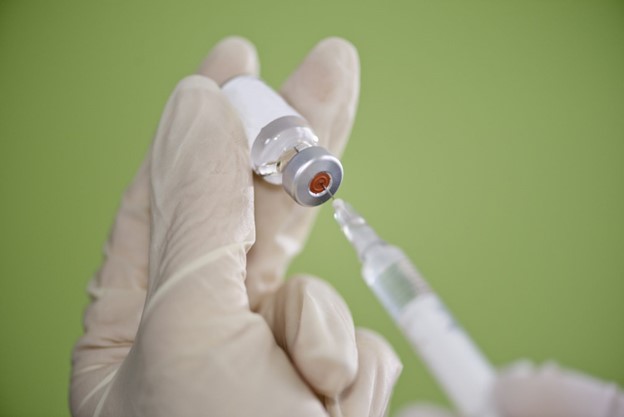What type of shock is characterized by a hypersensitivity reaction causing massive vasodilation and capillary leaks, which may occur with a drug or latex allergy?
Anaphylactic shock.
Cardiogenic shock.
Neurogenic shock.
Hypovolemic shock.
The Correct Answer is A
The correct answer is choice A: Anaphylactic shock.
Choice A rationale:
Anaphylactic shock is the correct answer. Anaphylactic shock is a severe and potentially life-threatening allergic reaction that causes massive vasodilation, capillary leakage, and bronchoconstriction. It can occur rapidly after exposure to an allergen such as certain foods, insect stings, medications, or latex. The release of histamine and other inflammatory mediators leads to systemic vasodilation and increased permeability of blood vessels, resulting in a sudden drop in blood pressure and compromised organ perfusion.
Choice B rationale:
Cardiogenic shock is characterized by inadequate cardiac output due to severe heart dysfunction. It is typically caused by conditions like myocardial infarction, heart failure, or other cardiac issues. While allergic reactions can potentially affect the cardiovascular system, the symptoms described in the question are more indicative of anaphylactic shock.
Choice C rationale:
Neurogenic shock results from disruption of sympathetic nervous system control over blood vessel tone, often due to spinal cord injury or severe emotional distress. This leads to widespread vasodilation and a sudden drop in blood pressure. While it can cause hemodynamic instability, it doesn't specifically involve the hypersensitivity reaction and capillary leaks associated with anaphylactic shock.
Choice D rationale:
Hypovolemic shock is caused by a significant loss of blood volume or bodily fluids, leading to decreased intravascular volume and subsequent inadequate tissue perfusion. This shock type is not directly related to a hypersensitivity reaction or capillary leakage caused by allergic responses. 2 / 2
Nursing Test Bank
Naxlex Comprehensive Predictor Exams
Related Questions
Correct Answer is C
Explanation
The correct answer is choice C: Administering penicillin.
Choice A rationale:
Imposing strict bed rest for 4 to 6 weeks. This choice is not the most appropriate therapeutic management for rheumatic fever. While rest is important during the acute phase, strict bed rest for 4 to 6 weeks is excessive and could lead to physical deconditioning and psychological distress for the child.
Choice B rationale:
Administering corticosteroids if chorea develops. This choice is relevant to the management of rheumatic fever but is not the primary treatment. Chorea is a movement disorder that can occur as a complication of rheumatic fever. Corticosteroids may be used to manage chorea symptoms, but they are not the mainstay of treatment for rheumatic fever itself.
Choice C rationale:
Administering penicillin. This is the correct choice. Penicillin is the mainstay of treatment for rheumatic fever. It helps eradicate the group A streptococcal infection that triggers the inflammatory response leading to rheumatic fever. Penicillin is essential to prevent further complications such as rheumatic heart disease.

Choice D rationale:
Avoiding salicylates (aspirin). This choice is also relevant to the management of rheumatic fever. Salicylates, including aspirin, are used to relieve symptoms and reduce inflammation. However, in children with acute rheumatic fever, salicylates are contraindicated due to the risk of developing Reye's syndrome, a serious condition that affects the brain and liver.
Correct Answer is A
Explanation
The correct answer is choice A. Wearing cotton underpants.
Choice A rationale:
Wearing cotton underpants is the recommended option to prevent urinary tract infections (UTIs) in young girls. Cotton underpants allow better air circulation, which helps to keep the perineal area dry. This reduces the growth of bacteria and prevents moisture buildup, which are crucial in preventing UTIs. Synthetic fabrics can trap moisture and create a conducive environment for bacterial growth, increasing the risk of UTIs.
Choice B rationale:
Limiting bathing as much as possible is not an appropriate recommendation for preventing UTIs. Hygiene is essential to prevent UTIs, and regular bathing is part of maintaining cleanliness. Overly limiting bathing can lead to poor hygiene practices and may not significantly prevent UTIs, as they are often caused by factors beyond bathing frequency.
Choice C rationale:
Increasing fluids and decreasing salt intake can be beneficial for overall health but may not directly prevent UTIs. While staying hydrated is important for maintaining urinary health, simply increasing fluids and reducing salt intake might not be sufficient to prevent UTIs. Hygiene practices and proper perineal care play a more significant role in preventing UTIs.
Choice D rationale:
Cleansing the perineum with water after voiding is a good hygiene practice, but it alone may not be enough to prevent UTIs. While maintaining cleanliness is crucial, using water to cleanse the perineum after voiding should be combined with other practices, such as wearing cotton underpants and proper wiping techniques, to effectively prevent UTIs.
Whether you are a student looking to ace your exams or a practicing nurse seeking to enhance your expertise , our nursing education contents will empower you with the confidence and competence to make a difference in the lives of patients and become a respected leader in the healthcare field.
Visit Naxlex, invest in your future and unlock endless possibilities with our unparalleled nursing education contents today
Report Wrong Answer on the Current Question
Do you disagree with the answer? If yes, what is your expected answer? Explain.
Kindly be descriptive with the issue you are facing.
